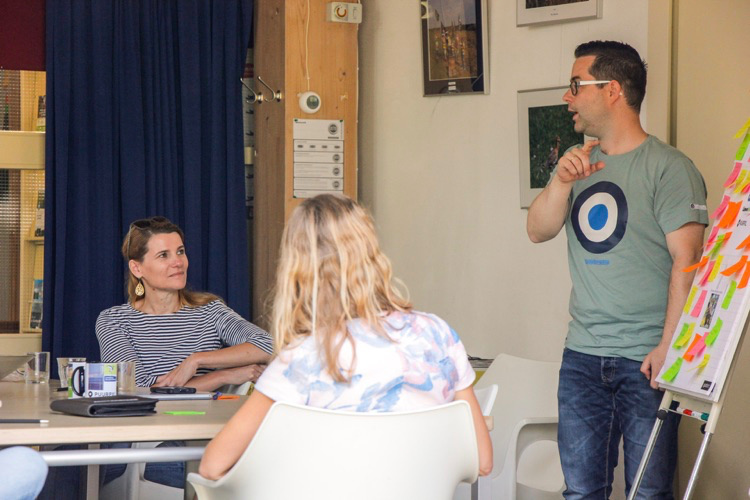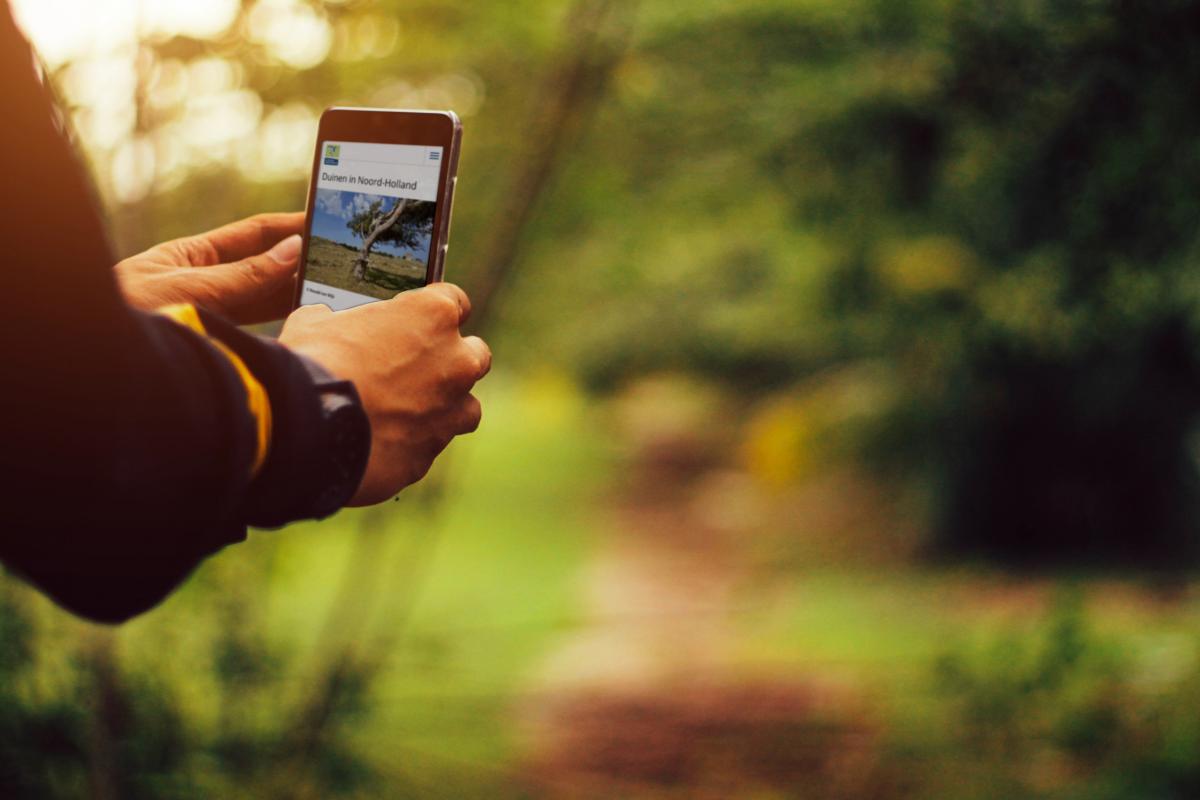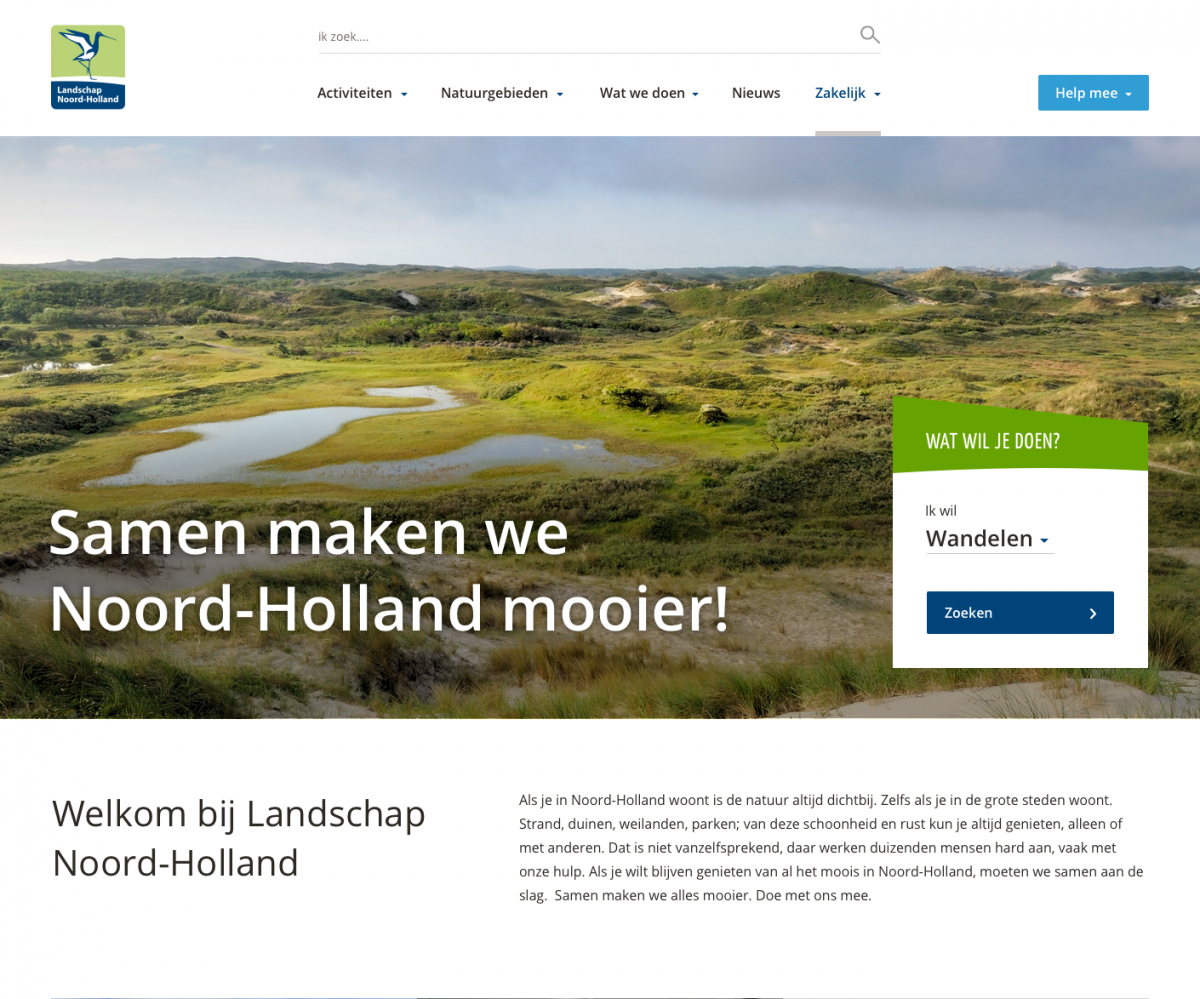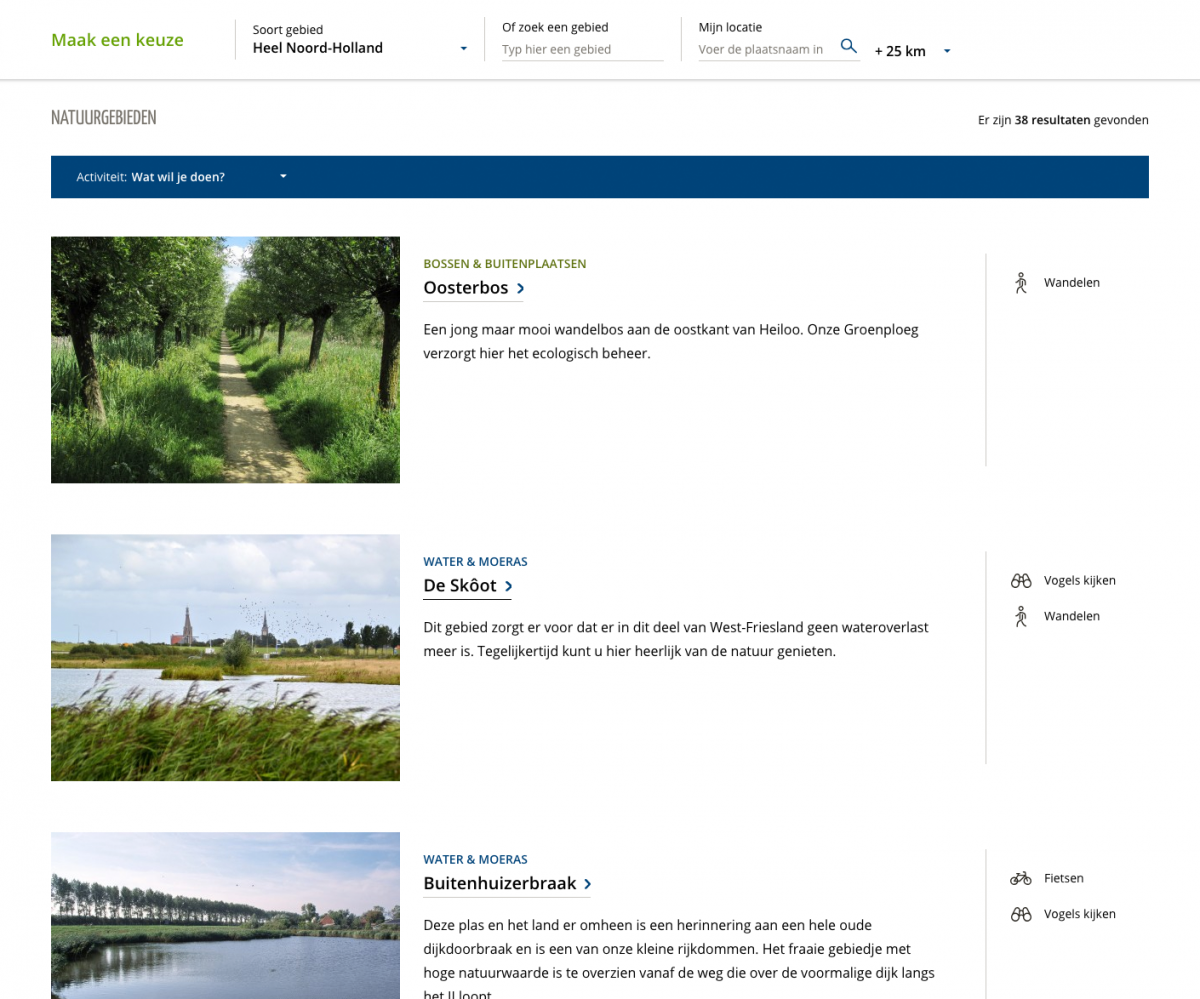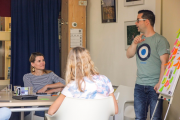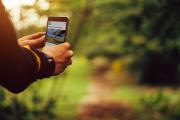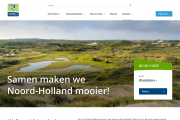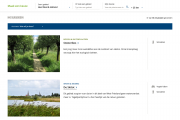Noord-Holland Nature Association

Non-profit
Case description
There were several reasons for the project:The former website relied on an older Drupal version, lacking proper support
The website was non-responsive
Landschap Noord-Holland renewed its branding strategy in order to get more people to donate time or money
User research showed that users (individuals and companies) weren’t happy with the website
Case goals and results
The project targets that were met just 9 months after go live:- A more effective and engaging website, that gets visitors involved with our mission: Conversion ratio of all targets combined have doubled from 8% to 16%
- A better user experience for mobile devices: More mobile visitors (+23%); More returning mobile visitors (+10%); More pages by mobile visitors (+40%).
- Easier administrative process and handling: +21.000 messages sent to Exact
- Better visibility and brand positioning Landschap Noord-Holland: +8.000 pages pageviews “What we do”
Online business KPI’s:
- Increase unique visitors (+119%)
- Increase of donors (+158%)
- Increase in leads (+145%)
- More gifts (+833% This number is correct!)
- More bookings (+14%)
Challenges
Increasing public awareness and added value about the Noord-Holland Nature Association for all of its inhabitants as well as The Netherlands as a whole was one of the biggest challenges. Increasing donors and memberships was an important business goal the new website had to help with.Upgrading to Drupal 8 was a massive improvement, both technically as well as from users’ perspective. Drupal Commerce makes maintaining and booking of activities much easier. Editors can now add webforms and manage and add activities themselves. Both Drupal Commerce and the webforms implementation contain dynamic data exchange with Exact Synergy and Payment Service Provider MultiSafePay. These links were implemented in such a way that the editors can easily add or skip data exchange per webform.
The pages are presented through fixed graphic elements per unique template, complemented with a library of graphic assets, based on Drupal Paragraphs. These assets (or content blocks) each add their own specific look or functionality to a template and can be inserted to any page by the web editors. By adding new elements to the assets library it is very easy to enhance the website with more functionality and to enable optimization, which truly makes the website sustainable.
Community contributions
We needed an integration between Webform (used for forms such as “Become a member”) and Commerce (for payments). During the project we wrote the Webform Product module (https://www.drupal.org/project/webform_product), which is shared with the community. This module can be used for websites that have commerce for payment of predefined product types, but are in need of a more flexible product for temporary product types or highly customisable product types, like a quick donation form or a promotional product.The Scheduled Cache Tag Invalidation module (https://www.drupal.org/project/scheduled_cache_tag_invalidation) enables developers to schedule the invalidation of cache tags. This can be useful in case you for instance show event dates and times on your website and you want to have the caches updated once an event time has passed. The module was developed during the project is about to be shared with the Drupal Community.

